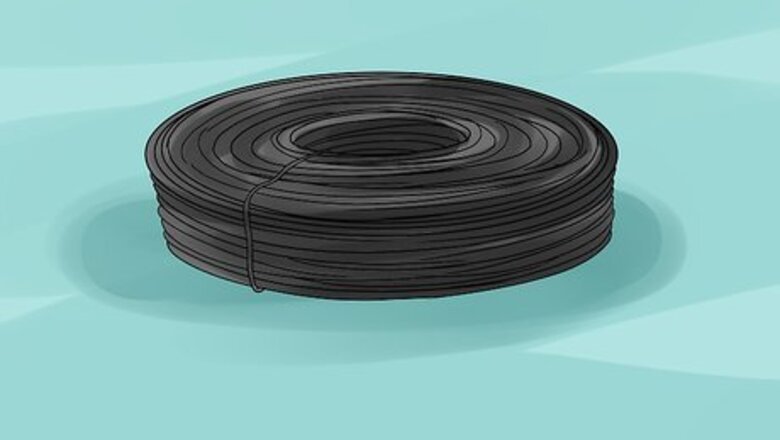
views
Setting up to crochet
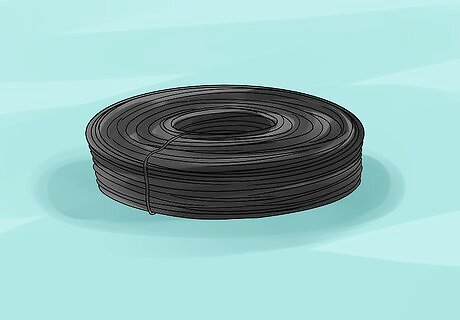
Choose the type of wire for your crafting needs. Annealed wire is one of the most pliable and easy to use for most wire-crafting needs. Another good example to choose from is copper wire, it is flexible, strong, and shines. Galvanized wire is very strong and resists corrosion, however it is harder to bend and shape it.
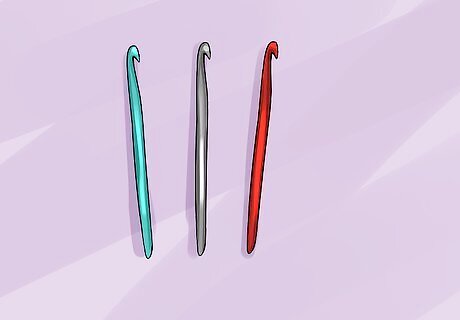
Match your crochet needle hook to the gauge, hardness of the wire and desired loop pattern. The thickness of the wire gauge you use will influence how big or small you will be able to form the loops. As the wire gets thicker it will also be harder to bend. Avoid using wooden or plastic hooks. The tension of the wires will dent and deform the wood needles and the plastic needles will break very easily. Select Aluminum or steel needle that is smooth and have a thicker flat section near the grips. You will use this part of your needles to check and maintain an uniform size for your loops.
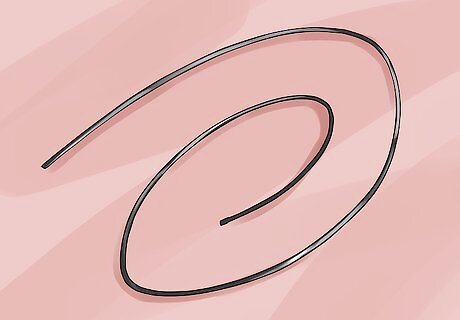
Avoid cutting the wire into long strands. Having loose wire that is longer than 18 inches (46 cm) can cause the wire to get tangled or kink. It is also a safety hazard; someone could trip over it or it can injure someone. Calculate the wire length that you will need for the pattern or size of your job. It is best to use one single length of wire for the entire piece. Don't waste excess wire or end up cutting the length of wire too short to complete your piece.
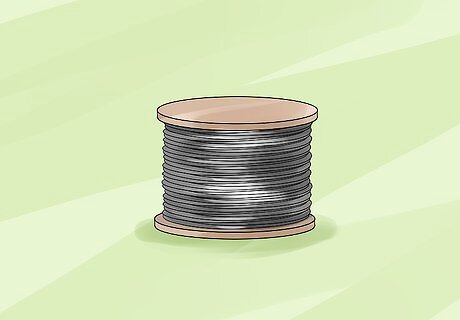
Keep the wire rolled up in its original spool and keep it as close to you as you can. If the spool is too big roll a sufficient amount of wire onto a smaller spool or wind it into a small loop that you can hold with your hand.
Crocheting a chain
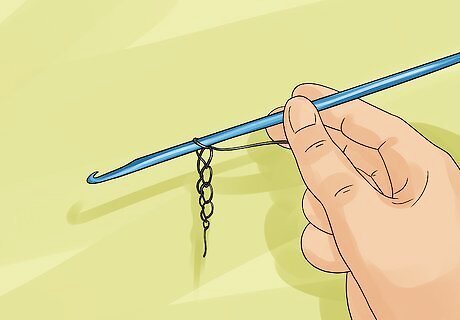
Plan the right number of stitches for the pattern of the piece you intend to make. To start with your piece you first have to crochet a chain of stitches before you crochet the loops that the pattern calls for.
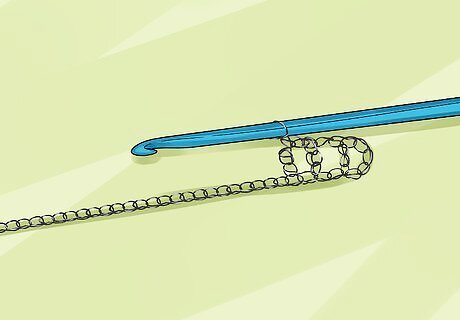
Cut out a 18 - 24 inch strand of wire. You will have to practice holding the wire and needle in a way that the wire won't bend unnecessarily until you are comfortable and feels natural. Although, the principle of crocheting with yarn and wire is similar, wire behaves differently. You will find that even though you may have experience crocheting yarn, the properties of wire will require you to handle it differently.

Do not wind the wire on your pinkie or bend it around your forefinger. Wire hardens slightly when it is bent and can also create kinks that will make your pattern sloppy and uneven. Hold the wire straight between your forefinger and middle finger sliding it instead. Pinch the end with your thumb and the other two fingers pulling just enough to create the tension needed to keep the wire straight from the spool. To maintain the tension needed for good even stitches you must secure the spool allowing it to slowly unwind and reel it in towards you using your forefinger and middle-finger. You are now ready to cast on and begin to crochet.
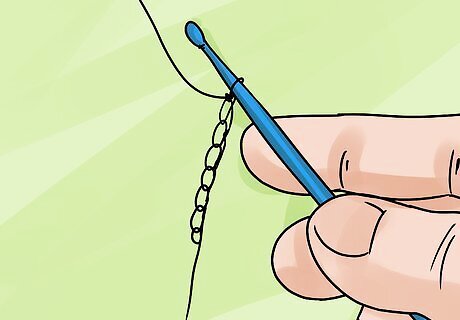
Tie a slip knot. Leaving at least a 4 inch tail at the end, loop the wire twice around your forefinger and middle finger.Then, with the crochet hook grab one piece of the wire and pull it through the loop towards you. Pull from the tail end until it tightens around your hook. You just made the slipknot.
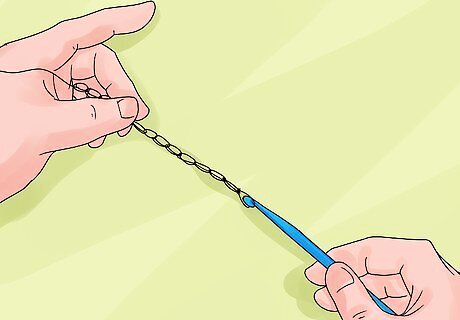
Holding the wire with one hand and the hook with the other stick the crochet hook through the slipknot and grab the wire with your hook. The wire should be under the crochet hook and twisting counterclockwise coil the wire around it so that it begins to bend into a loop. Once the wire takes the circular shape twisted around your crochet hook, you can pull it towards you through the loop hole. You have made your first wire chain stitch.
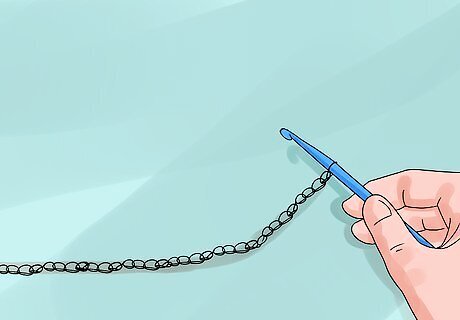
Continue making the desired number of chain stitches and checking the diameter of each loop using the wide part of the crochet hook to keep an uniform shape. You may have to lay them down and flatten it to keep the shape neat.
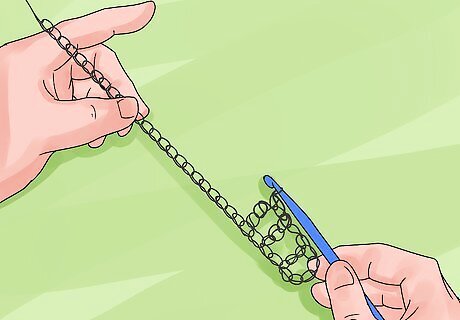
Turn your work and slip stitch a row. With one loop on your hook stick the crochet hook through the chain stitch loop and catch & coil the wire and pull through both loops towards you. You made your first wire slip-stitch.
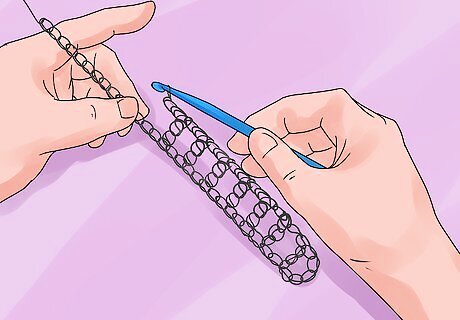
Repeat until you finish the slip stitch row. Keep checking your loops with the wide part of the crochet hook often to maintain the pattern shape.
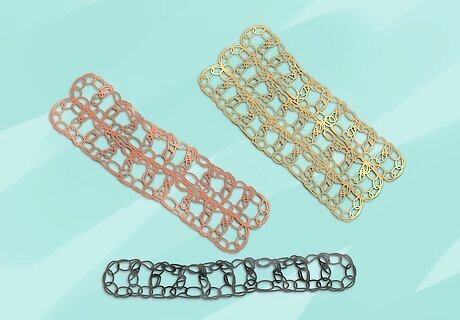
Keep practicing until you can also crochet more intricate stitches like single crochet, Half double crochet, Double crochet, Treble crochet, etc.




















Comments
0 comment